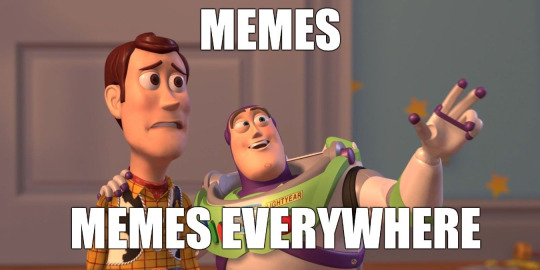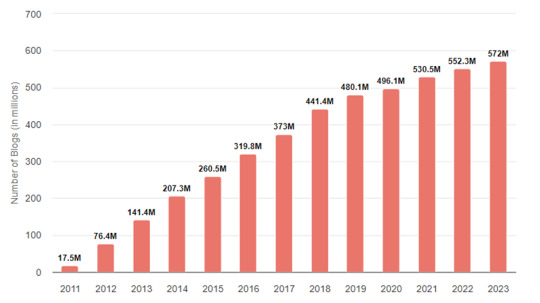Text
Has the Covid-19 pandemic changed the public perception of gaming?

The Covid-19 pandemic has ushered in a new era of unprecedented challenges and transformations across various aspects of our lives. One of the unexpected shifts that emerged during this global crisis was a notable change in the public perception of gaming. Long dismissed by some as a mere pastime for the younger generation, gaming took on a newfound significance as people sought solace, entertainment, and connection in the face of isolation and uncertainty.
Increased Gaming Activity:

In the wake of global lockdowns and the imposition of social distancing measures, video games emerged as a lifeline for individuals seeking entertainment and social connection (Kriz, 2020). With traditional avenues like cinemas and live events shuttered, people of all ages gravitated toward the expansive and diverse realms of gaming (Kriz, 2020). Families, friends, and individuals, faced with the limitations of physical gatherings, discovered solace and community in the immersive worlds crafted by video games (Kriz, 2020). The interactive nature of gaming provided not only a means of escapism but also a platform for social interaction that was otherwise challenging to attain in a world grappling with isolation (Kriz, 2020). Consequently, this shift in focus towards gaming led to an unprecedented surge in activity, transcending geographical boundaries and offering a shared virtual space for individuals to connect and find joy amid the uncertainties of the pandemic.
Recognition of Gaming's Social Benefits:

The Covid-19 pandemic brought about a significant transformation in the perception of gaming, emphasizing its social dimensions more than ever before. This shift was underscored by the recognition of gaming's social aspects, as highlighted by Barr and Copeland-Stewart (2021). Multiplayer and online games transcended their traditional role as sources of entertainment, evolving into dynamic platforms for virtual socializing. The boundaries between gaming and social interaction blurred, challenging stereotypes that portrayed gaming as a solitary activity. Virtual gatherings within games and live-streamed gaming sessions, as observed by Kriz (2020), became innovative avenues for individuals to connect, engage, and maintain social ties while adhering to physical distancing guidelines. This newfound social dimension not only reshaped the perception of gaming but also showcased its potential to foster meaningful connections in a world grappling with isolation during the pandemic.
Economic Impact on the Gaming Industry:

In the throes of the Covid-19 pandemic, the gaming industry, as studied by López-Cabarcos et al. (2020), confronted a unique amalgamation of challenges and opportunities. Supply chain disruptions and production hurdles posed formidable obstacles, yet paradoxically, the demand for gaming products and services witnessed an unprecedented surge. López-Cabarcos et al. (2020) highlight that this apparent contradiction can be attributed to the profound shifts in consumer behavior spurred by the pandemic. The widespread adoption of remote work and the surge in leisure time spent at home became catalysts for the industry's resilience. Online gaming, digital sales, and in-game purchases experienced a remarkable upswing as individuals sought immersive and engaging forms of entertainment within the confines of their homes (López-Cabarcos et al., 2020). The adaptability demonstrated by gaming companies underscored the industry's ability to navigate and even thrive amidst the evolving challenges brought about by the global crisis, illustrating a resilience that sets it apart from many other sectors.
Escape and Stress Relief:

Amid the uncertainty and stress wrought by the Covid-19 pandemic, individuals sought solace in unconventional outlets, with gaming emerging as a notable therapeutic escape (Kriz, 2020). Research studies conducted during this period indicated that engaging in gaming activities had the potential to yield positive effects on mental well-being (Kriz, 2020). Gaming provided a unique avenue for individuals to unwind and disconnect from the formidable challenges of the real world, offering not only entertainment but also a therapeutic respite (Barr & Copeland-Stewart, 2021). In-game environments, meticulously crafted for relaxation and exploration, transformed into havens where players could momentarily detach from the anxieties associated with the ongoing global crisis (Barr & Copeland-Stewart, 2021). These findings underscored the multifaceted role of gaming, extending beyond mere entertainment to serve as a valuable coping mechanism for individuals navigating the tumultuous landscape of the pandemic.
Conclusion:
The Covid-19 pandemic has reshaped our lives in numerous ways, and the transformation in the public perception of gaming stands out as a notable development. From a surge in gaming activity to the recognition of gaming's social benefits, the industry has weathered the storm and, in many ways, thrived during these challenging times. As we move forward into a post-pandemic world, it remains to be seen whether these shifts in perception will endure or if they represent a temporary phenomenon born out of the unique circumstances of the past few years. Nevertheless, one thing is clear: gaming is no longer just a form of escapism; it has become an integral part of our evolving cultural landscape.
List of References:
Barr, M & Copeland-Stewart, A 2021, ‘Playing video games during the COVID-19 pandemic and effects on players’ well-being’, Games and Culture, vol. 17, no. 1, pp. 122–139.
Kriz, WC 2020, ‘Gaming in the time of covid-19’, Simulation & Gaming, vol. 51, no. 4, pp. 403–410.
López-Cabarcos, MÁ, Ribeiro-Soriano, D & Piñeiro-Chousa, J 2020, ‘All that glitters is not gold. the rise of gaming in the covid-19 pandemic’, Journal of Innovation & Knowledge, vol. 5, no. 4, pp. 289–296.
1 note
·
View note
Text
In an era filled with fake news, what effect can this have on crowdsourced information?

In today's digital age, the rapid dissemination of information has empowered individuals to contribute to a collective pool of knowledge through crowdsourcing. Crowdsourced platforms harness the diverse perspectives of the online community to generate, validate, and curate information. However, the pervasive issue of fake news threatens the very foundation of crowdsourced information, raising questions about its reliability and impact. In this article, we explore the profound effects of fake news on crowdsourced information and delve into potential strategies to mitigate these challenges.
Trust in the Era of Misinformation:

The credibility of crowdsourced information is intricately connected to the reliability of its contributors, as emphasized by Lamprou et al. (2021). In the contemporary landscape saturated with the proliferation of fake news on social media and various online platforms, the trustworthiness of information sources is under constant threat (Lamprou et al., 2021). In such an environment, individuals who rely on crowdsourced data face a growing challenge in distinguishing accurate information from the overwhelming sea of misinformation. This heightened difficulty in discernment contributes to a decline in overall trust in crowdsourcing platforms. As users grapple with the influx of unreliable data, the very foundation of crowdsourced information, dependent on the collective wisdom of contributors, is susceptible to erosion, necessitating a nuanced approach to address the trust crisis in the era of fake news.
Validation in the Face of Deception:
At the heart of crowdsourcing lies the fundamental principle of collectively validating information, as emphasized by Lamprou et al. (2021). However, this foundational concept faces a formidable challenge in the prevalent era of fake news. The insidious spread of misinformation introduces a novel layer of complexity to the collective validation process, requiring contributors to navigate a landscape where distinguishing fact from fiction becomes an increasingly daunting task. The very essence of crowdsourcing relies on the accuracy of information, yet contributors find themselves grappling with the arduous challenge of upholding this accuracy amidst the deluge of misleading content. As misinformation proliferates, the validation mechanisms inherent in crowdsourced platforms are put to the test, prompting a critical evaluation of their efficacy in maintaining the integrity of the information verification process. The struggle to discern the truth in the face of misinformation underscores the intricate dynamics at play within the crowdsourcing paradigm.
Impact on Decision-Making:

The impact of fake news on crowdsourced information reverberates through decision-making processes, encompassing realms from journalistic endeavors to policy formulation, as articulated by Chiu et al. (2014). Decisions grounded in flawed crowdsourced data can carry tangible consequences in the real world. The pervasive influence of misinformation within the information landscape poses a formidable challenge for decision-makers. Navigating through this tainted environment requires heightened vigilance and an urgent implementation of additional measures to ensure the accuracy of crowdsourced information (Chiu et al., 2014). Chiu et al.'s insights underscore the critical need for a meticulous and discerning approach in utilizing crowdsourced data for decision-making, emphasizing the potential repercussions that misinformation can have across various sectors and the imperative for safeguarding the integrity of the information utilized in decision-making processes (Chiu et al., 2014).
Mitigation Strategies in the Digital Age:
Addressing the intricate challenges posed by fake news within the realm of crowdsourced information necessitates a comprehensive and proactive strategy. Crowdsourced platforms should deploy robust mechanisms designed to detect and filter out misinformation seamlessly integrated into their systems. Simultaneously, initiatives focused on education and awareness campaigns directed at contributors become essential, enabling individuals to develop a critical eye in evaluating information and thereby curbing the inadvertent propagation of misinformation. Furthermore, the integration of technological advancements plays a pivotal role in mitigating the impact of fake news on crowdsourced information. Leveraging machine learning algorithms and automated tools stands out as a particularly effective approach, allowing for the identification and removal of false information. The implementation of such technological solutions serves to enhance the overall quality and reliability of crowdsourced datasets, fostering a more trustworthy information ecosystem (Tucker et al., 2018).
Conclusion:
In conclusion, the era of fake news has profound implications for crowdsourced information. The trustworthiness of contributors, the validation processes, and the impact on decision-making all highlight the critical need for vigilance and innovation in the realm of crowdsourcing. By embracing technological advancements and empowering contributors with the tools to navigate the complexities of misinformation, we can strive to build a more resilient and reliable foundation for crowdsourced information in the digital age.
List of References:
Chiu, C-M, Liang, T-P & Turban, E 2014, ‘What can crowdsourcing do for decision support?’, Decision Support Systems, vol. 65, pp. 40–49.
Lamprou, E, Antonopoulos, N, Anomeritou, I & Apostolou, C 2021, ‘Characteristics of fake news and misinformation in Greece: The rise of new crowdsourcing-based journalistic fact-checking models’, Journalism and Media, vol. 2, no. 3, pp. 417–439.
Tucker, JD, Pan, SW, Mathews, A, Stein, G, Bayus, B & Rennie, S 2018, ‘Ethical concerns of and risk mitigation strategies for crowdsourcing contests and Innovation Challenges: Scoping Review’, Journal of Medical Internet Research, vol. 20, no. 3.
4 notes
·
View notes
Text
Is social media useful in spreading information on Covid-19 in Malaysia?

In the age of digital connectivity, social media platforms have become powerful tools for information dissemination, community engagement, and awareness campaigns. The COVID-19 pandemic, a global health crisis that has reshaped the way we live and communicate, has accentuated the role of social media in spreading information. In this blog post, we will explore the dynamics of how social media has been utilized in Malaysia to share crucial information about COVID-19.
The Speed of Information:

One of the undeniable advantages of social media is its ability to deliver information swiftly to a vast audience. In the context of COVID-19, this rapid dissemination has proven vital for keeping the public informed about the latest developments (Hussain, 2020). Health organizations, government agencies, and public health experts in Malaysia have utilized platforms such as Facebook, Twitter, and Instagram to share real-time updates, guidelines, and important announcements (Maryani et al., 2022). The speed at which information travels through these channels has been instrumental in helping Malaysians stay abreast of the evolving situation.
Community Engagement and Support:
Beyond serving as a channel for official updates, social media platforms provide a space for community engagement (Mat Dawi et al., 2021). Malaysians have used these platforms to share their experiences, ask questions, and provide support to one another. During times of uncertainty, the sense of community fostered on social media can be a source of strength. Through group discussions, live sessions, and shared resources, individuals can connect and navigate the challenges posed by the pandemic together (Mat Ruzlin et al., 2021).
Awareness Campaigns in the Digital Realm:
Governments and health organizations have harnessed the power of social media for public awareness campaigns (Maryani et al., 2022). These campaigns go beyond traditional advertising methods and leverage the interactive nature of these platforms. Information on preventive measures, symptoms, testing centers, and vaccination updates has been disseminated through local culture, reaching a wide audience, and promoting understanding (Maryani et al., 2022). Social media's reach and accessibility make it an effective tool for broadcasting critical information to diverse segments of the population.
The Battle Against Misinformation:

The dual nature of social media as both a potent force for good and a potential breeding ground for misinformation has been underscored by researchers such as Hussain (2020). The rapid sharing of information on these platforms has indeed led to the dissemination of inaccurate or misleading content, posing a significant challenge, especially during a global health crisis like the COVID-19 pandemic (Hussain, 2020). Recognizing this, Malaysia has proactively addressed the issue by leveraging social media not only as a means of communication but as a tool to combat misinformation. Initiatives led by health authorities, as highlighted by Yusof et al. (2020), have involved actively engaging with the public online. These efforts go beyond traditional communication channels, enabling health authorities to debunk myths, provide fact-checks, and address public concerns directly. By fostering a two-way communication channel on social media, Malaysia aims to ensure that accurate and reliable information prevails in the digital landscape, enhancing public understanding and trust during these challenging times.
Information Overload:

The digital age has ushered in an era of information abundance, and nowhere is this more evident than on social media platforms. As Yusof et al. (2020) point out, the sheer volume of information can be overwhelming for users in Malaysia and globally. Navigating through a deluge of posts, articles, and updates becomes a daunting task as individuals seek reliable and accurate information about COVID-19 (Yusof et al., 2020). This challenge underscores the critical importance of media literacy and honing critical thinking skills. Malaysians, like their counterparts around the world, find themselves in a constant struggle to sift through the noise, discern credible sources, and make informed decisions about their health and safety. In the face of a pandemic, where the accuracy of information can have profound consequences, cultivating a population that is adept at critically evaluating digital content becomes an indispensable aspect of public health resilience.
Conclusion:
In conclusion, the impact of social media on spreading information about COVID-19 in Malaysia is multifaceted. From rapid information dissemination and community engagement to awareness campaigns and the battle against misinformation, social media has played a pivotal role. As we navigate the waves of this ongoing pandemic, it is essential to leverage the benefits of social media while addressing the challenges it presents. Malaysians, like global citizens, are adapting to a digital age where information is both a lifeline and a challenge, and the responsible use of social media remains a key factor in shaping the narrative of our shared experience.
List of References:
Hussain, W 2020, ‘Role of social media in covid-19 pandemic’, The International Journal of Frontier Sciences, vol. 4, no. 2, pp. 59–60.
Maryani, A, Triwardhani, IJ, Pratama, R & Mustafa, MZ 2022, ‘The use of social media for the Covid 19 Prevention Campaign’, Advances in Social Science, Education and Humanities Research.
Mat Dawi, N, Namazi, H, Hwang, HJ, Ismail, S, Maresova, P & Krejcar, O 2021, ‘Attitude toward protective behavior engagement during covid-19 pandemic in Malaysia: The role of E-government and Social Media’, Frontiers in Public Health, vol. 9.
Mat Ruzlin, AN, Chen, XW, Yunus, RM, Samsudin, EZ, Selamat, MI & Ismail, Z 2021, ‘Promoting mental health during the COVID-19 pandemic: A hybrid, innovative approach in Malaysia’, Frontiers in Public Health, vol. 9.
Yusof, AN, Muuti, MZ, Ariffin, LA & Tan, MK 2020, ‘Sharing information on covid-19: The ethical challenges in the Malaysian setting’, Asian Bioethics Review, vol. 12, no. 3, pp. 349–361.
1 note
·
View note
Text
Do memes provide a useful way of understanding politics?

In the fast-paced and ever-evolving landscape of digital communication, memes have emerged as powerful tools for shaping public discourse, particularly in the realm of politics. These bite-sized, often humorous snippets of information have transcended their origins as internet jokes to become influential forces in political conversations. From simplified communication to youth engagement and the rise of meme wars, the impact of memes on politics is both fascinating and complex.
Accessibility and Virality:
In the contemporary political landscape, the accessibility and virality of memes stand as pivotal assets in shaping public opinion. In an era where information is disseminated at the click of a button, memes serve as concise, easily shareable vehicles for political ideas. The potency of a well-crafted meme lies in its potential to go viral swiftly, transcending geographical and cultural boundaries to reach a diverse and expansive audience within a remarkably short timeframe. Social media platforms, including Twitter, Instagram, and Facebook, have evolved into virtual battlegrounds where these political memes are not just shared but actively engaged with through likes, comments, and resharing (Kasirye, 2019). This dynamic online ecosystem acts as a catalyst for the rapid dissemination of political messages, influencing public discourse and contributing to the formation of collective perspectives (Kasirye, 2019). The power of memes to traverse digital spaces, gaining traction and momentum, underscores their role as influential agents in the contemporary political communication landscape.
Youth Engagement and Reach:
In an era characterized by rapid technological advancements and shifting societal dynamics, traditional forms of political engagement often struggle to capture the attention of younger demographics. However, memes have emerged as a potent bridge connecting politics with the youth. Unlike the more formal and conventional methods of political discourse, memes resonate with the younger generation by employing a language that is both familiar and relatable. This digital form of communication serves as a dynamic platform where the youth feel not only understood but also empowered to express their perspectives in a manner that aligns with their cultural context. As Kulkarni (2017) suggests, the strategic use of memes in politics has the potential to break down barriers and ignite interest among a demographic that might otherwise remain disinterested in traditional political conversations. By embracing the humor, simplicity, and visual appeal intrinsic to memes, political messages can transcend generational gaps, fostering a renewed sense of engagement and participation among the youth in the ever-evolving landscape of digital political discourse.
Simplified Communication:
Memes, as succinct and humorous expressions of political ideas, embody a unique form of digital communication that has proven both powerful and contentious. In distilling intricate political concepts into bite-sized, easily digestible formats, memes leverage the potency of simplicity to quickly resonate with a wide audience (Bebić & Volarevic, 2018). This approach, often accompanied by humor or satire, facilitates not only rapid comprehension but also the sharing of content across social media platforms (Bebić & Volarevic, 2018). However, the very simplicity that makes memes accessible and shareable raises valid concerns about oversimplification, potentially diluting the depth and nuances of complex political issues. Despite these concerns, memes have demonstrated an unparalleled ability to bridge the gap between intricate policy discussions and public understanding, serving as effective vehicles for political communication in the digital age (Kulkarni, 2017).
Satire and Critique:

Humour, wielded as a potent tool within the realm of political memes, transcends the traditional boundaries of political critique. As highlighted by Kulkarni (2017), memes create a distinctive space for satire and dissent, providing individuals with a light-hearted avenue to express their opinions on political figures, policies, and events. This unique form of criticism is characterized by its accessibility and relatability, making it not only entertaining but also thought-provoking. By injecting wit and humour into their content, meme creators engage audiences in a manner that traditional political discourse often struggles to achieve (Kulkarni, 2017). The power of laughter becomes a catalyst for dialogue, enabling individuals to navigate complex political landscapes with a sense of shared amusement, fostering a connection among those who find common ground in their critiques. In essence, political memes act as a vehicle for a nuanced form of dissent, demonstrating the ability of humour to bridge gaps and make political discourse more approachable and engaging.
Conclusion:
In conclusion, the marriage of memes and politics represents a digital revolution in the way we engage with and understand political discourse. From their accessibility and virality to their role in youth engagement, memes are reshaping the landscape of political communication. As we navigate this brave new world of digital dialogue, the study of memes offers valuable insights into the intersection of culture, technology, and politics. While memes provide a democratized platform for political expression, their impact also raises questions about the potential oversimplification and polarization of complex political issues in the digital age.
List of References:
Bebić, D. and Volarevic, M., 2018. Do not mess with a meme: the use of viral content in communicating politics. Communication & Society, 31(3), pp.43-56.
Kasirye, F., 2019. The effectiveness of political memes as a form of political participation amongst millennials in uganda. Journal of Education and Social Sciences, 13(1), pp.44-52.
Kulkarni, A 2017, ‘Internet meme and political discourse: A study on the impact of internet meme as a tool in communicating political satire’, SSRN Electronic Journal.
2 notes
·
View notes
Text
Is blogging still relevant in the age of TikToks and Instagram?
In an era where attention spans are shrinking, and social networking sites (SNS) like TikTok and Instagram dominate the digital landscape, one might wonder whether traditional blogging still has a place in the digital world. After all, TikToks offer 60-second video clips filled with entertainment, and Instagram showcases stunning visuals in a matter of seconds. Does blogging, with its long-form content, still have a role to play? The short answer is yes. While TikToks and Instagram have their strengths, blogging continues to thrive and play a crucial role in online communication and content creation.
The Power of TikTok and Instagram
Before delving into the enduring relevance of blogging, it's essential to acknowledge the undeniable power of TikTok and Instagram. These platforms have revolutionized the way we consume content, making it easier than ever to share and discover a wide array of multimedia content, from short dance videos to captivating photos (Herrman 2019). Their visual and interactive nature is particularly appealing to a younger generation of internet users, and they have become essential marketing tools for businesses and influencers alike.
Statistics of Blogging (Tumblr)

Let's use Tumblr as an example. According to Bondarchuk (2023), every day, a remarkable 12.8 million blog posts are created and shared on the platform and in 2023, Tumblr experienced substantial growth and increased activity. Over an eight-year span, the platform saw its number of blogs double, highlighting its sustained popularity and continued appeal to its user base, which shows that it is still relevant.
The Strengths of Blogging
Now, let's explore why blogging is still very much relevant in the age of TikToks and Instagram:
1. Depth and Detail
One of the primary strengths of blogging is its capacity for depth and detail (Lazarov 2018). While TikToks and Instagram posts are limited by their short-form nature, blogs allow for in-depth exploration of topics. Whether it's a comprehensive guide, a thoughtful analysis, or a personal essay, blogs provide the space to delve deep into subjects and offer valuable insights that cannot be fully conveyed in a 15-second video or a single image caption.
2. Timeless Content
Blog posts have the potential for longevity that social media posts often lack. A well-written blog article can continue to attract readers and provide value for years after it's published. In contrast, social media content tends to have a fleeting lifespan, with posts quickly buried in users' feeds (Lazarov 2018).
3. SEO and Traffic (Businesses)
Blogs can be powerful tools for improving search engine optimization (SEO) and driving organic traffic to a website. Search engines like Google still prioritize text-based content, and a well-optimized blog can help a website rank higher in search results. This makes blogs a valuable asset for businesses and individuals looking to increase their online visibility and attract a broader audience. According to Hubspot's research findings, websites with blogs receive 55% more traffic compared to those lacking blogs, even if there are no readers (Schaefer 2023).
4. Monetization Opportunities
Many bloggers, just like social media influencers on Instagram and TikTok, generate income through various methods, such as affiliate marketing, sponsored content, and selling products or services. Blogging offers multiple avenues for monetization, making it an attractive platform for those looking to turn their online presence into a source of income (SendPulse 2023).
5. Community Building
Blogs often foster a sense of community among readers. Through comments and discussions, readers can engage with the author and fellow readers, creating a sense of belonging and connection that can be challenging to replicate on platforms like TikTok or Instagram (SendPulse 2023).
6. Diverse Content Formats
Blogs aren't limited to text-based content. They are highly versatile platforms that allow you to incorporate various media formats, including images, videos, infographics, and even podcasts. This flexibility enables you to cater to a broader audience with varying content preferences (Lazarov 2018).
For instance, you can create a blog post that combines written content with embedded videos, offering the best of both worlds. This multimedia approach allows you to engage your audience on different levels and ensures that your blog remains visually appealing and interactive.
Conclusion
In conclusion, blogging remains a relevant and valuable platform in the age of TikToks and Instagram. While these social media platforms have their strengths, blogging offers unique advantages in terms of depth and detail, timeless content, SEO and traffic, monetization opportunities, community building, and diverse content formats. Blogging complements other forms of content creation and can be a foundation of a well-rounded online presence. So, if you're wondering whether blogging is still relevant in the age of TikToks and Instagram, the answer is yes.
List of References:
Bondarchuk, Y 2023, ‘100+ Tumblr statistics for 2023 (demographics, traffic & employee)’, MarketSplash, MarketSplash, viewed 2 October, 2023, <https://marketsplash.com/tumblr-statistics/>.
Herrman, J 2019, ‘How TikTok is rewriting the world’, The New York Times, The New York Times, viewed 2 October, 2023, <https://www.nytimes.com/2019/03/10/style/what-is-tik-tok.html>.
Lazarov, T 2018, ‘Why you should prefer a blog over social media’, Fstoppers, viewed 2 October, 2023, <https://fstoppers.com/business/why-you-should-prefer-blog-over-social-media-250816>.
Schaefer, M 2023, ‘10 benefits of blogging even if nobody reads it’, Schaefer Marketing Solutions: We Help Businesses {grow}, viewed 2 October, 2023, <https://businessesgrow.com/2023/02/20/benefits-of-blogging/>.
SendPulse 2023, ‘Blogging’, SendPulse, viewed 2 October, 2023, <https://sendpulse.com/support/glossary/blogging>.
3 notes
·
View notes